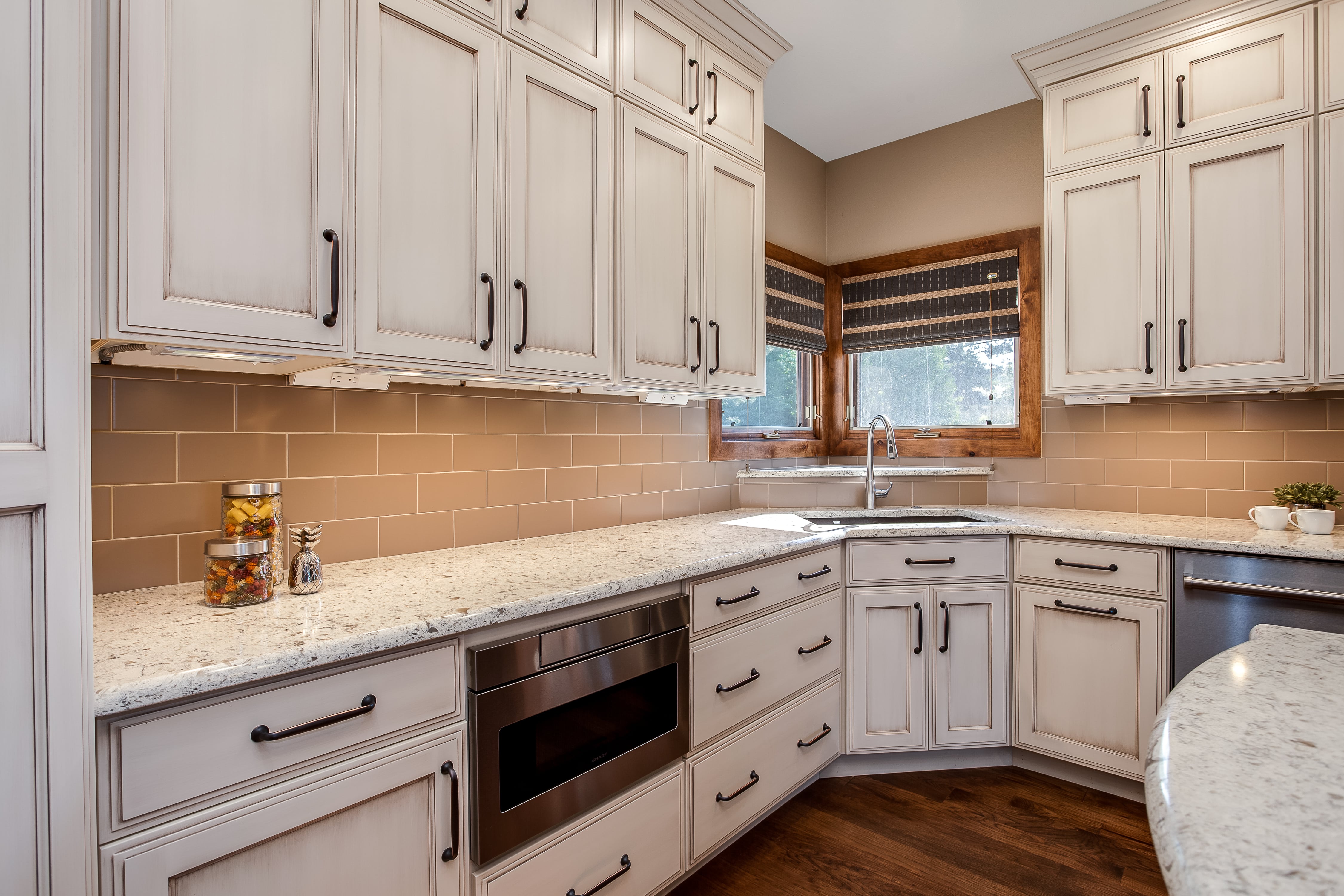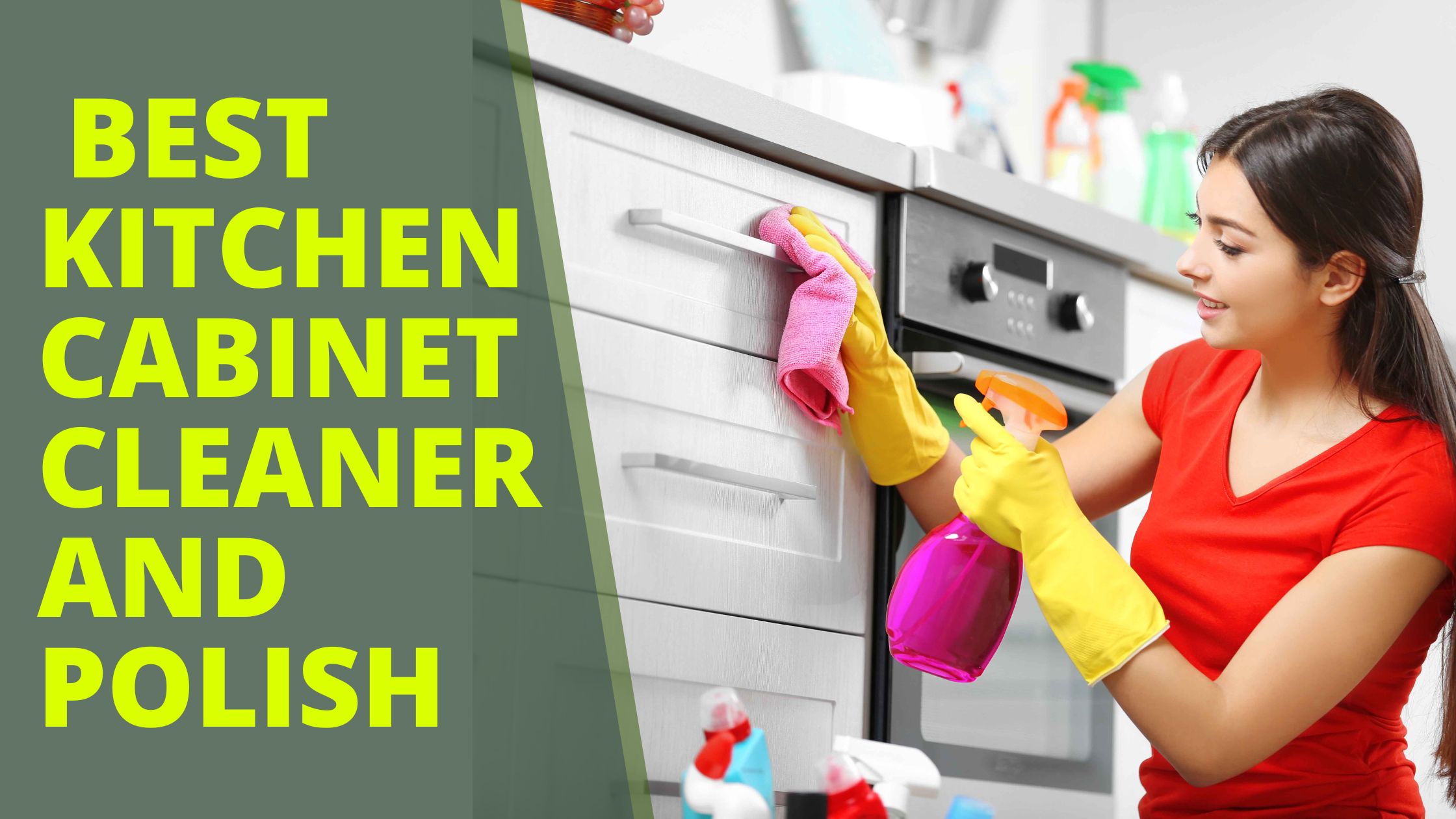Types of Polish for Kitchen Cabinets

Choosing the right polish for your kitchen cabinets significantly impacts their durability, appearance, and longevity. The type of polish, its sheen level, and its compatibility with your cabinet material are all crucial considerations. This section will delve into the specifics of each, enabling you to make an informed decision.
Durability Comparison of Oil-Based, Water-Based, and Lacquer-Based Cabinet Polishes
Oil-based polishes, traditionally favored for their rich, deep luster and excellent durability, offer superior protection against scratches and wear. However, they have a longer drying time and release strong fumes during application, requiring good ventilation. Examples include traditional varnish or polyurethane varnish. They are ideal for high-traffic areas and cabinets needing robust protection. Water-based polishes, conversely, are low-VOC (Volatile Organic Compound), making them environmentally friendly and easier to clean up. They dry quickly and offer good durability, though they may not be as resistant to scratches as oil-based options. Examples include water-based polyurethane or acrylic-based paints. These are suitable for most kitchens and offer a balance between durability and ease of application. Lacquer-based polishes provide a hard, durable finish that’s resistant to scratches and chemicals. They dry exceptionally fast, minimizing disruption. However, they can be more challenging to apply evenly and require careful preparation. Examples include lacquer-based spray paints or lacquers applied by brush. They are a good choice for high-end kitchens or those prone to spills and heavy use.
Sheen Levels and Their Visual Effects on Kitchen Cabinets
The sheen level of your cabinet polish significantly affects the overall look and feel of your kitchen. Different sheen levels offer distinct visual effects and suit various kitchen styles.
| Sheen Level | Visual Effect | Suitability | Example Kitchen Style |
|---|---|---|---|
| Matte | Subtle, hides imperfections | Traditional, rustic, farmhouse | A farmhouse kitchen with exposed beams and vintage accents. |
| Satin | Soft sheen, low reflection | Transitional, contemporary | A modern kitchen with sleek countertops and minimalist design. |
| Semi-Gloss | Moderate sheen, easy to clean | Traditional, contemporary | A classic kitchen with shaker-style cabinets and stainless steel appliances. |
| High-Gloss | High shine, reflects light | Modern, contemporary | A sleek, minimalist kitchen with high-gloss floors and a reflective backsplash. |
Best Polish Choices for Different Cabinet Materials
The type of polish you choose should be compatible with your cabinet material to ensure optimal results and longevity. Using an inappropriate polish can damage the surface and reduce its lifespan.
| Cabinet Material | Recommended Polish Type | Considerations |
|---|---|---|
| Wood | Oil-based polyurethane, water-based polyurethane, lacquer | Choose a polish that enhances the wood grain and provides adequate protection against moisture and scratches. Oil-based offers superior protection, while water-based is easier to apply. |
| Laminate | Water-based polyurethane, acrylic polish | Avoid abrasive cleaners and polishes that can damage the laminate surface. Water-based options are generally preferred due to their gentler nature. |
| Melamine | Acrylic polish, specialized melamine cleaners | Melamine is sensitive to harsh chemicals. Use a polish specifically designed for melamine or a gentle acrylic-based cleaner. Avoid abrasive cleaners. |
Application Techniques and Preparation

Proper preparation and application techniques are crucial for achieving a flawless, long-lasting polish on your kitchen cabinets. Failing to adequately prepare the surfaces can lead to uneven coverage, peeling, and a less-than-professional finish. The following steps will guide you through the process, ensuring a successful outcome.
Best polish for kitchen cabinets – Thorough preparation is essential before applying any polish to your kitchen cabinets. This involves cleaning the surfaces to remove grease and grime, sanding to create a smooth surface for better adhesion, and potentially priming to ensure a uniform finish, especially on bare wood or previously painted surfaces.
Cabinet Preparation
These steps will ensure your cabinets are ready for polishing. Proper cleaning, sanding, and priming will drastically improve the final result and the longevity of your polish.
- Cleaning: Begin by thoroughly cleaning the cabinet surfaces. Use a degreaser or a solution of warm water and dish soap to remove any grease, grime, or sticky residue. Pay close attention to handles, knobs, and crevices. Rinse thoroughly with clean water and allow the cabinets to dry completely before proceeding.
- Sanding (If Necessary): If your cabinets have imperfections, scratches, or a rough texture, sanding is necessary to create a smooth surface for optimal polish adhesion. Start with a higher-grit sandpaper (120-180 grit) to remove any significant imperfections and then move to a finer grit (220-320 grit) for a smoother finish. Always sand in the direction of the wood grain to avoid scratches. After sanding, wipe away all dust particles with a tack cloth.
- Priming (If Necessary): Priming is particularly important if you’re working with bare wood or if the existing finish is damaged or uneven. A good quality primer will create a uniform surface for the polish to adhere to, resulting in a more even and durable finish. Allow the primer to dry completely according to the manufacturer’s instructions before applying the polish.
Polish Application Methods
Different polishes require different application methods to achieve the best results. Understanding these methods and following safety precautions will help you achieve a professional finish.
- Brushing: Use a high-quality brush with soft bristles to apply the polish evenly. Work in thin, even coats, allowing each coat to dry completely before applying the next. This method is suitable for most types of polishes, particularly those with a thicker consistency.
- Rolling: A small roller with a short nap is ideal for applying polish to larger cabinet surfaces quickly and efficiently. This method is particularly effective for achieving a smooth, even finish, especially with thinner polishes. Ensure even pressure to avoid streaks or roller marks.
- Spraying: Spraying offers the most even coverage, but requires careful technique to avoid runs and drips. Use a high-quality spray gun and maintain a consistent distance from the surface. Apply several thin coats, allowing each to dry before applying the next. Always wear a respirator mask when spraying any type of polish.
Safety Precautions: Always wear appropriate safety gear, including gloves and eye protection, when applying any type of polish. Work in a well-ventilated area, and follow the manufacturer’s instructions carefully.
Troubleshooting Polish Application Problems, Best polish for kitchen cabinets
Even with careful preparation and application, problems can occur. This table provides solutions to common issues.
| Problem | Solution |
|---|---|
| Drips | Apply thinner coats; allow each coat to dry completely before applying the next. Use a clean cloth to gently wipe away any excess polish immediately. |
| Streaks | Ensure even pressure when applying polish; work in the direction of the wood grain. Use a clean, lint-free cloth to gently buff out streaks after the polish has dried. |
| Uneven Coverage | Ensure the surface is properly prepared; sand and prime if necessary. Apply multiple thin coats, allowing each coat to dry completely before applying the next. |
| Bubbles | Apply thinner coats, avoid working too quickly, and ensure proper ventilation to allow the polish to dry evenly. |
Maintenance and Long-Term Care: Best Polish For Kitchen Cabinets
Maintaining the pristine finish of your kitchen cabinets requires consistent effort and the right approach. Regular cleaning and proper care significantly extend the lifespan of both the cabinets and their polish, preventing premature wear and tear and preserving their aesthetic appeal. Neglecting these aspects can lead to irreversible damage, necessitating costly repairs or replacements.
Regular cleaning is paramount to prolonging the life of your kitchen cabinet polish. The frequency depends on the type of polish used and the level of kitchen activity. However, a weekly dusting and monthly more thorough cleaning is generally recommended. Different polishes require specific cleaning methods. For example, oil-based polishes may require a gentle wipe-down with a soft cloth dampened with a mild dish soap solution, followed by a thorough drying to prevent residue buildup. Water-based polishes often tolerate a slightly more aggressive cleaning, but always test a small, inconspicuous area first to ensure compatibility. Avoid abrasive cleaners or scouring pads, as these can scratch the surface and damage the polish.
Cleaning Techniques for Various Polishes
The appropriate cleaning method depends entirely on the polish type. Oil-based polishes benefit from gentle cleaning with a soft, slightly damp cloth and mild soap. Thorough drying is crucial to prevent streaking. Water-based polishes often tolerate slightly more moisture, but always test a small, inconspicuous area before applying any cleaning solution to the entire surface. For lacquer-based polishes, a specialized cleaner designed for lacquer is recommended to maintain its high-gloss finish. Always refer to the manufacturer’s instructions for the specific polish used to avoid any unintended damage.
Common Mistakes and Damage Repair
Several common mistakes can significantly shorten the lifespan of kitchen cabinet polish. Using harsh abrasive cleaners, employing excessive force while cleaning, or exposing the cabinets to excessive moisture are primary culprits. Improper cleaning techniques, such as using abrasive cloths or scouring pads, can easily scratch the surface. Leaving spills untreated for extended periods can also lead to staining and damage. Exposure to extreme temperatures, such as placing hot pots directly on the cabinets, can cause discoloration or cracking.
Minor scratches can often be repaired using a specialized touch-up kit appropriate for the cabinet’s finish. For deeper scratches or damage, professional refinishing may be necessary. Preventing these issues involves careful cleaning practices, avoiding abrasive materials, and promptly addressing spills. Regular inspections can also help identify and address minor issues before they escalate into major problems. A simple solution is to apply a small amount of appropriate polish to the affected area, blending it carefully with a soft cloth to minimize the visibility of minor imperfections. Always test any repair product on an inconspicuous area before applying it to the visible surface.
